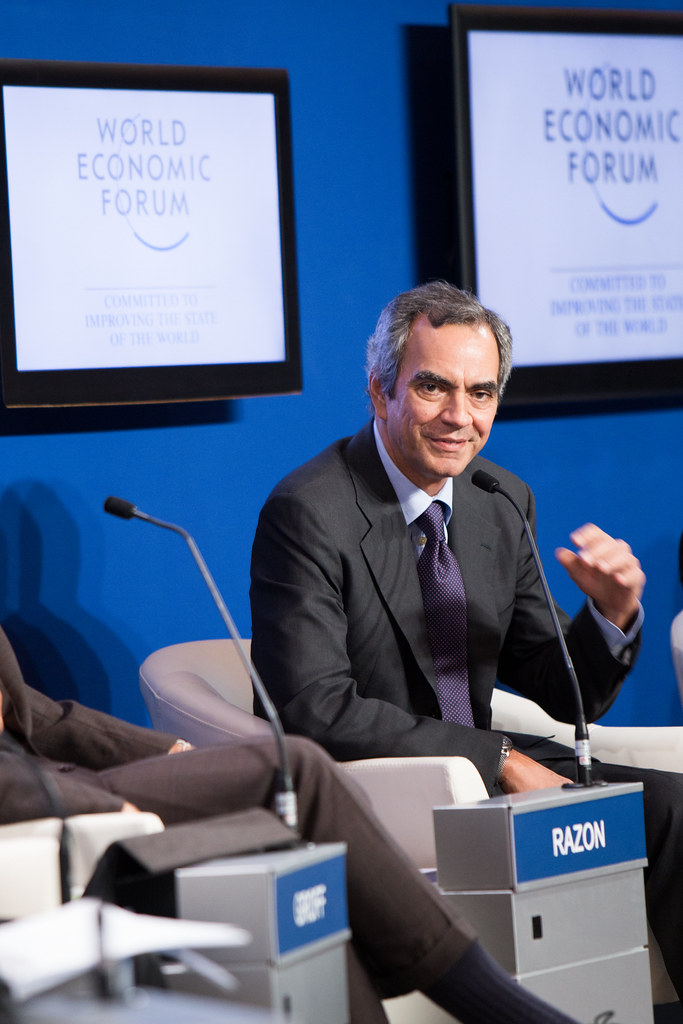Top Traders in Philippines – Teresita Sy-Coson & Enrique Razon
The Philippines is home to some of Asia’s most influential traders and investors whose strategies extend far beyond the local market. Among them, Teresita Sy-Coson and Enrique K. Razon Jr. stand out as symbols of discipline, vision, and resilience. Sy-Coson, Vice-Chairperson of SM Investments Corporation, shaped the nation’s largest retail and banking empire through long-term investing, diversification, and a focus on demographic trends. Razon, known as the “King of Terminals,” expanded a family port business into a global infrastructure leader while applying contrarian investing and strict risk management. Together, their careers illustrate how Filipino investors combine long-term vision with adaptability, offering lessons in patience, diversification, and capital preservation for today’s traders.
Teresita Sy-Coson
Teresita Sy-Coson is one of the most influential businesswomen in the Philippines and Asia, the eldest daughter of the “Retail King” of the Philippines, Henry Sy. She was born in 1950 in the Philippines. As the eldest daughter of billionaire Henry Sy, the founder of the SM Group conglomerate.
She is the Vice-Chairperson of the Board of SM Investments Corporation (SMIC) — the largest conglomerate in the Philippines by market capitalization.
She is considered the chief architect of the family’s retail empire. Under her leadership, the network of SM Department Stores and hypermarkets like SM Supermarket and Savory grew into the country’s largest retailer.
She also plays a key role in the family’s banking business, serving as the Chairperson of the Board of BDO Unibank — the largest bank in the Philippines.
She has been repeatedly included in Forbes’ list of the World’s Most Powerful Women. She is often called the most powerful woman in the business world of the Philippines.

Here are the key elements of Teresita Sy-Coson’s strategy, based on her public statements and actions:
- Long-Term Vision and Strategic Patience (Buy and Hold at a Corporate Level)
Unlike short-term trading, Sy-Coson focuses on long-term trends and opportunities.
- Example: The development of SM Supermalls. She doesn’t just build stores; she creates urban centers that become an integral part of Filipinos’ lives for decades to come. This is an investment in real estate, consumer demand, and urbanization.
- Trading Analogy: It’s like buying a stock of a promising company with confidence in its fundamental value and holding it for years, ignoring short-term volatility.
- Diversification Across Asset Classes and Industries
She manages a vast conglomerate that is diversified to mitigate risk.
- The portfolio of SM Investments Corporation (SMIC) includes:
- Retail: SM Retail (including department stores, supermarkets, hypermarkets).
- Real Estate: SM Prime Holdings (shopping malls, residential, offices).
- Banking: BDO Unibank (the largest bank in the Philippines) and China Banking Corporation.
- Other Assets: logistics, hospitality, mining.
- Trading Analogy: It’s like having a diversified investment portfolio of stocks, bonds, real estate ETFs (REITs), and commodities, so that a decline in one asset is compensated by the growth of another.
- Investing in Fundamental Trends and Demographics
Her decisions are based on a deep understanding of the Philippines’ macroeconomic trends.
- Growing Middle Class: She bets on the increasing consumer power of Filipinos. All her businesses (retail, banking, real estate) directly benefit from rising population incomes.
- Urbanization: The construction of shopping malls and residential complexes in developing cities follows the trend of people moving to megacities.
- Trading Analogy: It’s like trading based on macroeconomic analysis—buying assets that will benefit from long-term demographic or economic shifts (e.g., investing in emerging market ETFs or the consumer goods sector).
- Counter-Cyclical Investing
Sy-Coson is known for making bold moves during crises when others are afraid.
- Example: The SM Group actively expanded after the 1997 Asian Financial Crisis and during the 2008-2009 Global Financial Crisis, acquiring assets at lower prices.
- Trading Analogy: The “buy when there’s blood in the streets” strategy. This involves buying assets during market panic when they are undervalued, with the expectation of their recovery in the future.
- Strong Risk Management Through the Banking Sector
The fact that she chairs both SMIC and BDO is no coincidence. It is part of the strategy.
- Access to Capital: BDO provides the conglomerate with a stable source of funding and a deep understanding of financial markets.
- Liquidity Management: Understanding banking processes helps the entire group effectively manage cash flows and debt load, which is critical during crises.
- Trading Analogy: It’s like a trader who always monitors their margin, manages position sizes, and never goes “all-in,” preserving liquidity for good opportunities.
- Adaptation to Digital Trends
Understanding the threats and opportunities of digitalization, Sy-Coson drives the transformation of traditional business.
- Examples: Development of e-commerce platforms (Zalora, investments in Lazada), implementation of digital banking services (BDO Online), use of data from the retail network for analytics.
- Trading Analogy: It’s like timely recognizing a new trend (e.g., cryptocurrencies or AI) and adapting your strategy to not fall behind, but doing so thoughtfully, not speculatively.
- Social Responsibility as Part of the Business Model
She often says that business should benefit society. This is not just charity, but a strategy for sustainable development.
- Example: Job creation, support for local suppliers and SMEs, aid programs during natural disasters. This strengthens the brand and creates loyalty, which is beneficial for the business in the long run.
- Trading Analogy: Investing in ESG assets (environmental, social, governance) that show sustainable growth, are attractive to long-term investors, and are less risky.
Key Takeaway for a Private Trader/Investor:
You cannot trade like Teresita Sy-Coson because her scale and opportunities are incomparable to those of a private individual. However, you can adopt her principles:
- Think long-term. Don’t chase quick profits.
- Diversify your portfolio. Don’t put all your eggs in one basket.
- Invest in trends you understand (e.g., digitalization, aging population, “green” energy).
- Keep cash on hand for counter-cyclical purchases during market downturns.
- Manage your risks. Determine your position size in advance and use stop-losses.
- Continuously learn and adapt to new market realities.
Her strategy is not about scalping or swing trading. It is the highest level of strategic capital management and investing.
Enrique K. Razon Jr
Enrique K. Razon Jr. is a Filipino billionaire and one of the most influential businessmen in Asia. He is known as the “King of Terminals” for his activities in the port industry.
Date and Place of Birth: July 27, 1960, Manila, Philippines.
Positions: Chairman and President of ICTSI, Chairman of Bloomberry Resorts.
He inherited the family business, the company International Container Terminal Services Inc. (ICTSI), which in the late 1980s operated just a single port in Manila.

Under his leadership, ICTSI has transformed into a global giant in the management of ports and container terminals. The company now operates more than 30 terminals in 20 countries worldwide (including Asia, Africa, the Americas, Europe, and Oceania).
In 2013, he founded Bloomberry Resorts and opened the luxury resort and casino Solaire in Manila, which became one of the leaders in the gaming industry in Asia and a major competitor to casinos owned by other tycoons. He owns the large agribusiness company Agrinurture Inc.
He controls the company Prime Infrastructure Capital, which implements large-scale projects in water supply (e.g., the Wawa Dam project) and solar energy.
He is very private, rarely gives interviews, and avoids publicity.
Enrique Razon Jr. has journeyed from managing a modest family port company to building a global, multi-faceted corporation. He is a prime example of a Filipino business magnate who not only strengthened but also multiplied the inherited business many times over, expanding it to an international level.
Here are the key elements of Enrique K. Razon Jr.’s strategy that can be identified based on his public actions:
- Focus on Core, Infrastructure Assets (The Core Business Model)
This is the foundation of his strategy. He invests in businesses that are critical to the economy and have high barriers to entry.
- Port Terminals (ICTSI): A global network of ports in developing countries. The logic: global trade will only grow, and the demand for efficient logistics hubs is perpetual.
- Casinos and Resorts (Bloomberry): Focus on the domestic market of the Philippines and inbound foreign tourism. This is a play on the growth of consumer spending and tourism in Asia.
- Energy (Prime Infrastructure Capital): Recent major investments in renewable energy (solar, wind) and water desalination. The logic: the long-term trend towards decarbonization and solving water scarcity issues is the future.
Key takeaway: His “trading” strategy is not about stock speculation, but direct long-term investments in real assets that generate stable cash flow.
- Contrarian Investing
Razon often acts against market sentiment, buying assets that are undervalued or going through difficult times.
- Casino example: He entered the gambling business when it was not a major trend in the Philippines and built Solaire, which became the market leader.
- Ports example: ICTSI frequently acquires concessions to manage inefficient ports in countries with high growth potential (e.g., Africa, Latin America), improves them, and turns them into profitable assets.
Key takeaway: He looks for value investing opportunities where others are afraid or fail to see potential.
- Cash Flow-Based Diversification
He uses the stable cash flow from his core business (ports) to fund new ventures (casinos, energy). This allows him to be independent of external investors and act quickly and decisively when an opportunity arises.
Key takeaway: A strong cash-cow business is the fuel for new strategic investments.
- Deep Diversification (not to be confused with dilution)
His investments may seem disparate (ports, casinos, energy), but they are united by a common theme: a focus on the Philippines and Asia and investments in critical infrastructure (logistics, tourism, energy, water). - Active Management and Control
Razon is not a passive investor. He acquires controlling stakes and actively participates in the management of companies, appointing his team to implement his strategic vision. This is not about “buy and hold,” but about “buy, improve, and scale.” - Political Awareness
Operating a major business in the Philippines and other developing countries requires a deep understanding of the political landscape and building strong relationships with governments to obtain concessions and licenses. This is an integral part of his strategy.
What can you learn from Enrique Razon for personal trading/investing?
Although you cannot replicate his corporate deals, his philosophy is applicable to the private investor as well:
- Long-Term Horizon: Don’t speculate, invest. Look for companies with a strong business model that will be relevant in 10-20 years.
- Invest in What You Understand (Circle of Competence): Just as Razon focuses on infrastructure, choose 1-2 sectors of the economy that you will study in depth.
- Be a Contrarian: The biggest opportunities often appear where there is panic and assets are undervalued (as was the case during the 2008 or 2020 crises).
- Diversify Your Portfolio: But not just across industries, do it logically. For example, “infrastructure of the future”: logistics (ports, warehouses), energy (renewables), data (data centers).
- Focus on Cash Flow: Look for companies with stable and growing free cash flow. This is an indicator of a healthy business.
Stocks for Analysis (as a derivative of his strategy):
If you want to “replicate” his strategy on the stock exchange, you can look at the stocks of his companies (please note the liquidity and availability for non-residents of the Philippines):
- International Container Terminal Services Inc. (ICTSI)
- Bloomberry Resorts Corporation (BLOOM)
However, remember that buying shares of a single company is a risk. His strategy involves control over these assets, while you will only have a small share.
Summary: Enrique Razon Jr.’s strategy is a strategic, contrarian, long-term approach to investing in real assets with the aim of gaining control and creating value. It’s a marathon, not a sprint.
By analyzing the career and statements of Enrique K. Razon Jr., we can identify three key “trading” lessons in the broader sense of the word:
Lesson 1: Control Key Infrastructure (“Ports Are More Important Than Ships”)
The Essence of the Lesson: Instead of trading the commodity (asset) itself, focus on controlling the point through which that commodity must pass. This provides a stable cash flow and reduces the risks inherent in speculative transactions.
How This Manifests in Razon: He built his core business, International Container Terminal Services, Inc. (ICTSI), around port infrastructure. It doesn’t matter what ship is sailing, what goods it’s carrying, or if the market is rising or falling—to unload, it must pay to use the port. ICTSI became a “mandatory toll gate” for global trade.
Application in Trading and Investing:
- Trade Liquidity, Not Predictions: Instead of trying to guess where the price of stock X will go, consider which assets or sectors are the “ports” for cash flows. For example, during the cryptocurrency boom, the biggest profits were made not by those who guessed the right coins, but by the creators of exchanges (Binance) and wallets.
- Invest in “Shovels During a Gold Rush”: This is a classic strategy. Instead of risking everything to find a single “golden” stock, invest in brokerage firms, financial ETFs (e.g., XLF), or market makers who profit from overall market activity.
- The Search for Recurring Revenue: Look for companies with a resilient business model that generates income regardless of market conditions (e.g., electricity producers, telecommunications companies, payment systems like Visa/Mastercard).
Lesson 2: Masterful Risk and Capital Management
The Essence of the Lesson: Never risk your entire fortune on a single trade. Diversify risks across different asset classes and always have “dry powder” (a cash reserve) to be able to take advantage of a crisis.
How This Manifests in Razon: His holding company, Bloomberry Resorts (owner of Solaire Casino), faced enormous difficulties during the COVID-19 pandemic when the gaming business virtually came to a halt. However, his port business continued to generate stable cash flow. This diversification allowed him to weather the blow. Moreover, he always had the resources to make counter-cyclical investments (buying assets cheaply during panic).
Application in Trading and Investing:
- Strict Position Sizing Rule: Never risk more than 1-2% of your capital on a single trade. This will protect you from ruin even after a series of losses.
- Diversify Across Uncorrelated Assets, Not Just Stocks: A portfolio should contain not only stocks from different sectors but also bonds, commodities (gold), cash, and possibly crypto assets. When one part of the portfolio falls, another may rise or remain stable.
- Cash is Not Inaction, It’s a Strategy: Always keep a portion of capital in liquidity. Markets are cyclical, and the best opportunities (when “there’s blood in the streets”) appear precisely when most traders no longer have money to buy.
Lesson 3: Discipline, Patience, and Counter-Cyclical Action
The Essence of the Lesson: Emotions are an investor’s worst enemy. Greed makes you buy at peaks, and fear makes you sell at bottoms. Success comes to those who act disciplinedly, exercise patience, and have the courage to buy when others are panic selling.
How This Manifests in Razon: His best deals were made during periods of crisis or when assets were undervalued. He waited a long time for the right moment to enter new markets (e.g., expanding port operations in Africa) or to launch new projects (Solaire Casino). He does not succumb to short-term trends but plays a long-term, strategic game.
Application in Trading and Investing:
- The Trading Plan is Law: Before opening a trade, define your entry points, exit points (take-profit), and stop-loss. Follow the plan meticulously, without succumbing to the emotions of hope or fear.
- “Be Fearful When Others Are Greedy and Greedy When Others Are Fearful”: (c) Warren Buffett. This is a direct reflection of Razon’s strategy. The biggest moves start at moments of maximum pessimism. Study fundamental analysis to distinguish a company’s temporary problems from its complete collapse.
- Think Like a Businessman, Not a Speculator: When buying a stock, ask yourself: “Am I buying a share of a business or just a ticker on a chart?” This changes the psychology and forces you to look at the long-term perspective, not intraday fluctuations.
Conclusion
Although Enrique Razon Jr. is not a trader in the narrow sense, his business philosophy is the highest form of investing and capital management. His lessons for a trader boil down to:
- The search for strategic advantages (like a “port”).
- Ruthless risk control.
- Iron discipline and the ability to act contrary to the herd instinct.
These are not strategies for getting rich quick, but principles for building sustainable, long-term wealth in the financial markets.

